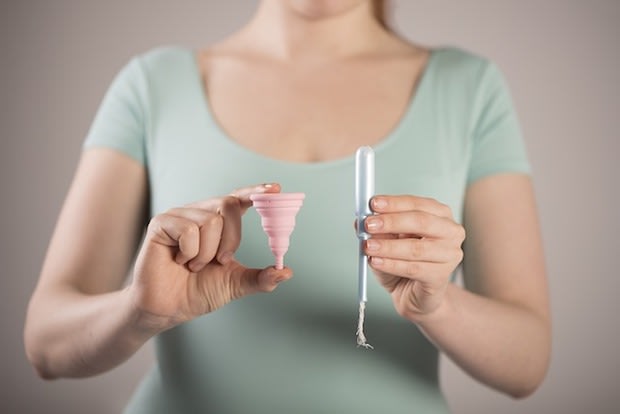Table of Contents
Hormone Therapy Overview
Many women will undergo some form of hormone therapy throughout their life. This therapy involves female sex hormones that can help replenish those lost during certain life events, like menopause. Having balanced hormones is integral in the proper functioning of the female body. The most common female sex hormones are estrogen and progesterone. These sex hormones are essential in regulating the menstrual cycle, metabolism, and bone growth, and rejuvenation.
If the hormone balance is off, then women can experience many unpleasant symptoms. An imbalance can occur at any age of life but is more common during menopause when estrogen production comes to a half. Estrogen is produced mostly in the ovaries, and when it stops, women’s menstrual cycles come to an end, and pregnancy is no longer possible. The severity of menopausal symptoms differs from woman to woman. Some common symptoms include:
- Night sweats
- Mood changes
- Weight gain
- Chills
- Irregular periods
- Vaginal dryness
If your symptoms are severe, your doctor may recommend hormone replacement medications, like Estraderm (estradiol), Climara (estradiol), and Prometrium (progesterone). Hormone replacement therapy can help treat these symptoms, but it is also important to learn the risks. Read on to learn more about the possible side effects of female hormone replacement therapy. [1] Introducing hormones to the body can come with a risk of blood clots. Birth control drugs, as well as hormone therapy, can include estrogen and progestin (synthetic progesterone). Contrary to popular belief, neither of these medications causes blood clots, but they can increase your risk of developing a clot. When taking hormone therapy, the risk of blood clots occurs in 1 in 300 women a year. Of course, your risk for clots is increased significantly if you already have a blood-clotting disorder. Your doctor may recommend an alternative treatment method if you have a blood-clotting disorder or are taking blood-thinning medication. Blood clots can occur because estrogen increases the plasma concentration of clotting factors. This increases the chance of blood clots and the development of deep vein thrombosis. When left untreated, clots can be dangerous and travel to the lungs and heart. If you are taking hormones, watch out for: Uterine (endometrial) cancer: Some research shows that women who have their uterus and are taking estrogen-only therapy are at risk for developing endometrial cancer. Over the years, doctors have learned that giving estrogen alone often has more side effects than a combination of hormonal therapy. Now, doctors typically prescribe estrogen and progestin because progestin helps protect against endometrial cancer. If taking artificial progesterone is not an option for you, your doctor may take an endometrial biopsy to make sure estrogen-only therapy does not create cancerous cells in your uterus. This cancer is only a risk for women who have not had a hysterectomy (removal of the uterus). [3] Breast Cancer: Current and past hormone replacement therapy users are at a higher risk of developing breast cancer. Unlike uterine cancer, breast cancer is a risk, regardless of your form of hormone replacement therapy. Combination HRT increases the risk of breast cancer by around 75 percent. Regardless of the amount of time you use HRT, your breast cancer risk increases the most during the first two to three years of using combination HRT. Estrogen-only hormone replacement therapy increases breast cancer after ten years of use. [4] If you are using hormone replacement therapy to combat menopausal symptoms, vaginal bleeding may occur. This may be confusing for some women because menstrual cycles are supposed to cease during menopause. This bleeding is not related to a menstrual cycle and may occur for several reasons. Hormone therapy often results in light bleeding or bleeding that appears as heavy as a normal period. If you are taking cyclic hormone therapy containing estrogen and progestin, you may experience bleeding regularly. If your bleeding comes out of nowhere while taking HRT, you may want to consult your doctor. Abnormal vaginal bleeding may be occurring due to: A stroke occurs when blood is not flowing properly to the brain. This can result in brain damage and loss of motor skills. Strokes can occur for several reasons, and hormone replacement therapy may be one of many factors. The exact correlation between HRT and stroke risk is still unknown and is still being heavily researched. In one study, researchers studied 88,914 women and the effect of HRT. Within five years of beginning menopause, those who began HRT appeared to have the same risk of a stroke as women who never began HRT. They found that women who began hormone replacement therapy over five years after menopause increased their risk of ischemic and hemorrhagic stroke. Another study in Denmark found that women who took oral HRT had a higher incidence of ischemic stroke. Those who applied HRT topically to their skin had no increased risk, and those using vaginal estrogen HRT saw a decreased risk. Regardless of your condition, talk to your doctor about which type of HRT is best for you. [5] The content provided in this article is based on thorough research and in some cases, reviewed by a medical professional. Our goal for the information is to provide helpful, general health informational. It is not intended as a substitute for professional medical advice.
Blood Clots
Cancer

Abnormal Vaginal Bleeding

Stroke
